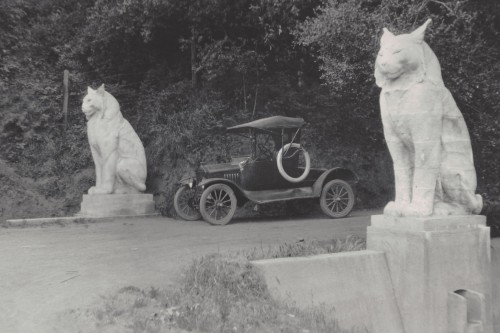




Barbara cooked meals for the stage coach passengers while Charlie helped change horses on the wagons. McKiernan's cabin near the summit was often a stopping spot and became known as Halfway House or Station Ranch. In the 1870s McKiernan started a stage coach business and later became one of the most successful businessmen in the area. There are many other bear stories in the Santa Cruz Mountains, but by the late 1800s most of the bears had been killed. At age 26 he married Barbara Berricke Kelly, an Irish nurse who had nursed him back to health after the nearly fatal grizzly bear attack. McKiernan recovered but had a metal plate, made from two Mexican dollar coins, temporarily fitted into his skull. The other hunter eventually managed to distract the bear. Mountain Charlie was seized by the bear, which crushed the front of his skull. In 1854 while hunting with a friend, he was surprised by a 1,000 pound mother bear with two cubs. McKiernan is most famous for his losing fight with a grizzly bear. He hunted, tried raising beef and even did some gold mining without luck. After a year in the mines, he came to the Santa Cruz Mountains and homesteaded a home, initially living alone. When his enlistment was up he headed for the California gold strike. Born in Ireland in 1825, Charles travelled to Australia while in the Army. The first was a hunter called Daniel Post. The next chapter will have more information about the early mountain roads, but one famous mountain personality needs to be introduced now.Ĭharles Henry 'Mountain Charlie' McKiernan was the second white man to live in the Summit area (settling in 1851). What remains of that original road, built in 1868, is now officially called Mountain Charlie Road. Just west of Highway 17, off Summit Road, Mountain Charlie Road was once part of the McKiernan Toll Road from Scotts Valley to the summit. This is a sample section from the book Highway 17: The Road to Santa Cruz by Richard Beal. Highway 17's Mountain Charlie Highway 17's Mountain Charlie


 0 kommentar(er)
0 kommentar(er)
